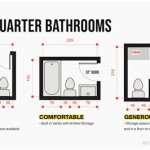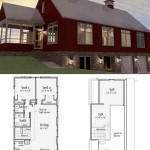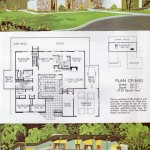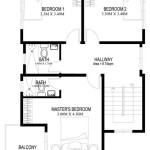How to Get Floor Plans for Your House in NSW
Acquiring floor plans for a house in New South Wales (NSW) can be necessary for a variety of reasons. These reasons range from planning renovations or extensions to resolving boundary disputes or simply understanding the layout of the property. The process of obtaining these plans varies depending on the age of the house, whether floor plans already exist, and where those plans are stored. This article outlines the methods available to individuals seeking floor plans for their house in NSW, detailing the necessary steps and potential challenges.
Investigating Existing Property Records
The first step in obtaining floor plans is to investigate whether they already exist within property records. Several avenues should be explored before commissioning new plans, as existing documentation can save considerable time and expense. These avenues include local council archives, the NSW Land Registry Services, and building professionals associated with the property's construction or previous renovations.
Local Council Archives: Local councils are responsible for approving building applications and maintaining records of approved plans. Building plans, including floor plans, are often submitted as part of development applications. Contacting the relevant local council for the area where the house is located is a crucial first step. Upon contacting the council, provide the property address and any available information regarding previous building approvals. Councils typically have a process for accessing these records, which may involve submitting a formal application and paying a fee. The availability of plans depends on the council's record-keeping practices and the age of the house. Older properties may have less comprehensive documentation compared to more recently constructed homes. Digital records are increasingly common, making access easier in many cases, but older documents might only be available in hard copy, requiring a physical visit to the council's offices.
NSW Land Registry Services: While the NSW Land Registry Services (LRS) primarily deals with land ownership and cadastral information, certain deposited plans may contain floor plans, particularly for strata schemes or properties with easements. Deposited plans detail the boundaries and divisions of land, and occasionally, building footprints and internal layouts are included. Searching the LRS records requires identifying the relevant deposited plan number, which can be obtained from the title search. A title search, which reveals the current ownership and any encumbrances on the property, is usually the starting point. The LRS offers online search facilities and in-person services. Fees apply for accessing and obtaining copies of deposited plans. It's important to note that deposited plans are more likely to contain floor plans for properties within strata schemes or those with complex land divisions than for freestanding residential houses.
Previous Building Professionals: Engaging with professionals who previously worked on the house may yield existing floor plans. This includes architects, builders, engineers, and draftspersons. If renovations or extensions have been undertaken, the professionals involved in those projects are likely to have created or updated floor plans. Reviewing past contracts, invoices, or council approval documents might reveal the names of these professionals. Contacting them directly to inquire about the availability of floor plans is a worthwhile step. Even if the original plans are unavailable, they may have information about the property's construction or modifications that can assist in creating new floor plans.
Engaging Professional Surveyors or Draftspersons
If existing floor plans cannot be located through property records or previous building professionals, engaging a professional surveyor or draftsperson is the next logical step. These professionals have the expertise and equipment necessary to accurately measure and document the existing layout of a house, creating detailed floor plans that meet specific requirements. The selection of a surveyor or draftsperson should be based on their experience, qualifications, and ability to deliver plans that satisfy the intended purpose.
Surveyor's Role: A surveyor's primary role is to accurately measure and map land boundaries and features. While they typically focus on external features, some surveyors can also provide internal floor plans as part of their services. This is particularly relevant if the floor plans are needed for boundary disputes, property subdivisions, or building extensions that require precise measurements. Surveyors use specialized equipment, such as total stations and GPS devices, to ensure accuracy. Their expertise is crucial for establishing the correct location of walls, doors, windows, and other structural elements. When engaging a surveyor, clearly communicate the specific requirements for the floor plans, including the level of detail needed and the intended use of the plans. The fees charged by surveyors vary depending on the size and complexity of the property, as well as the level of detail required.
Draftsperson's Role: A draftsperson specializes in creating technical drawings, including floor plans, elevations, and sections. They typically work from measurements taken by a surveyor or from architectural designs. Draftspersons can create floor plans based on existing structures by visiting the property, taking measurements, and documenting the layout. They use specialized software, such as AutoCAD, to produce accurate and detailed plans. The level of detail in the floor plans can be customized to suit the specific needs of the client. For example, floor plans can include the location of electrical outlets, plumbing fixtures, and other utilities. When engaging a draftsperson, provide clear instructions regarding the layout, dimensions, and features to be included in the floor plans. The cost of engaging a draftsperson depends on the complexity of the project and the level of detail required.
Selecting a Professional: When selecting a surveyor or draftsperson, several factors should be considered. Firstly, verify that they are appropriately licensed and insured. Secondly, review their previous work to assess their experience and expertise. Thirdly, obtain quotes from multiple professionals to compare prices and services. Finally, communicate clearly with the chosen professional regarding the specific requirements for the floor plans, including the level of detail, the intended use of the plans, and any deadlines. A written agreement outlining the scope of work, the deliverables, and the payment terms should be established before commencing the project.
Utilizing Online Resources and DIY Options
In some cases, individuals may attempt to create floor plans themselves using online resources or DIY methods. While these options can be cost-effective, they may not provide the same level of accuracy and detail as professionally prepared plans. DIY options are typically suitable for preliminary planning or conceptual design, but they should not be relied upon for legal or construction purposes.
Online Floor Plan Software: Numerous online software programs and mobile applications are available for creating floor plans. These tools typically provide a user-friendly interface and allow users to draw walls, add doors and windows, and place furniture. Some programs offer advanced features, such as 3D visualization and virtual tours. While these tools can be helpful for visualizing the layout of a house, they often lack the precision and accuracy required for professional-grade floor plans. The accuracy of plans created using online software depends on the accuracy of the measurements taken by the user. It is essential to use a reliable measuring tape or laser distance meter to ensure accurate measurements. Furthermore, the software may not account for structural elements or building codes, which can be critical for renovation or construction projects.
DIY Measurement Techniques: Creating accurate floor plans requires precise measurements of the house's dimensions. Using a measuring tape, laser distance meter, and a notebook or digital device to record measurements is essential. Start by measuring the external dimensions of the house, then move inside and measure each room individually. Pay attention to the location of doors, windows, walls, and other structural elements. It is helpful to sketch a rough outline of the house and record the measurements directly on the sketch. Take multiple measurements and double-check them to ensure accuracy. When measuring rooms, measure from wall to wall and from floor to ceiling. Note any irregularities in the walls or ceiling. Also, record the location of electrical outlets, plumbing fixtures, and other utilities. Creating accurate floor plans using DIY methods requires patience, attention to detail, and a good understanding of measurement techniques.
Limitations and Considerations: While DIY methods can be useful for preliminary planning, it is important to recognize their limitations. Floor plans created using online software or DIY techniques may not be suitable for legal or construction purposes. These plans may lack the accuracy and detail required for obtaining building permits or for guiding construction work. Additionally, DIY methods may not account for structural elements or building codes, which can lead to errors and costly mistakes. If accurate and detailed floor plans are required, engaging a professional surveyor or draftsperson is the recommended approach. Professional plans ensure accuracy, compliance with building codes, and suitability for legal or construction purposes.
Acquiring floor plans for a house in NSW involves navigating various resources and methods. Existing property records, professional services, and DIY options each offer unique advantages and limitations. By understanding these options and carefully considering the specific requirements, individuals can obtain the necessary floor plans for their property with confidence. The correct avenue to pursue depends largely on the purpose for which the floor plans are needed, the availability of existing documentation, and the budget allocated for the project.

Good Feng Shui Floor Plans For Your Home Clarendon Homes

Good Feng Shui Floor Plans For Your Home Clarendon Homes

Can I Draw My Own Plans Fluid Building Approvals

Discovering House Plans Top 7 Questions Answered
Home Designs Eden Brae Homes

Good Feng Shui Floor Plans For Your Home Clarendon Homes

Massena Stylish And Contemporary Home Design In Nsw Mcdonald Jones Homes

Free N House Designs And Floor Plans Steel Frame

Building A New Home Sutherland Shire Council

Horizon Downward Sloping Block House Design Mcdonald Jones Homes
Related Posts








